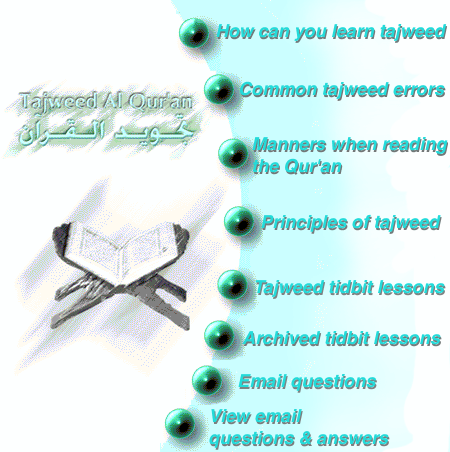|
|

copyright © 2002, abouttajweed.com, all rights reserved |
Question In knowing the "sakat"
(i.e. a light stop without taking a breath) stops in reading the Holy
Qur'an in the Hafs 'an Aasim way, we learned that there are 6 altogether but
they are grouped in two groups: in one group are 4 of them and in the
other 2. What is the difference between them? It seems that they
are done exactly in the same way. Your clarifications and
explanations are much appreciated. May Allah reward you. Answer There are four places in
the Qur’an that we are required to read with a sakt (
There are two places in
the Glorious Qur’an where it is allowed to make a
1. Between the end of surah Al-Anfaal and the beginning of surah At-Tawbah
2.
Between aayah 28 and 29 in surah Al-Haaqqah, when joining the two
aayaat.
If aayah 28 and 29 are
joined without the sakt, they must be read with an
idghaam of the
You
are correct, the sakt is done the same way for all six of the places,
irregardless if it is required or allowed. May Allah reward you and all
Muslims with goodness. |